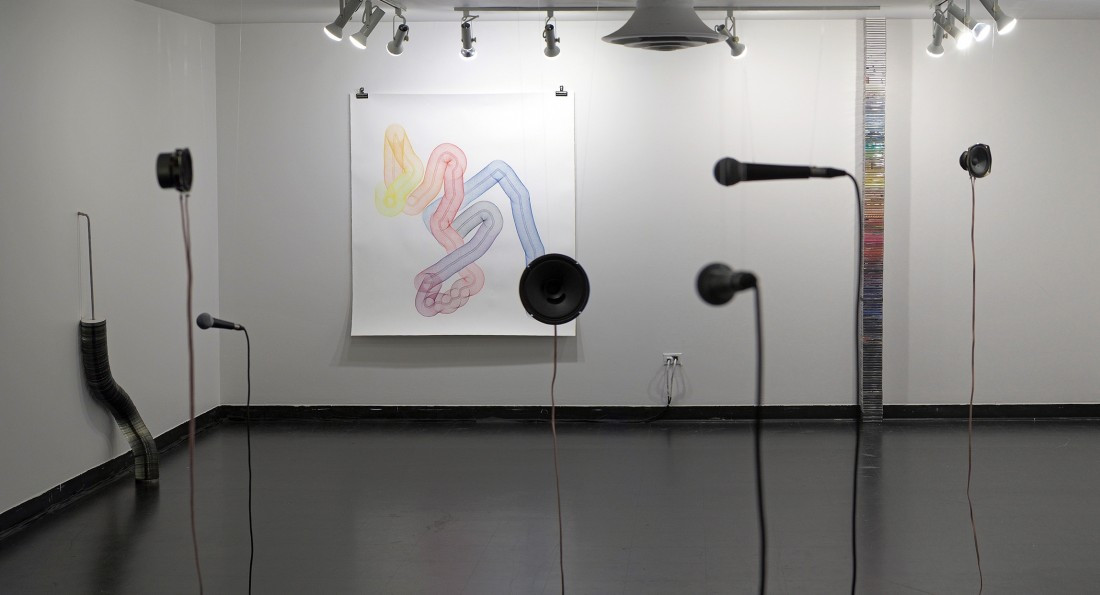Critipeg: Sounding Space
Adam Basanta & Eleanor King
Runs at Gallery 1C03 until Nov. 26
Sound is a sensory experience too often ignored in fine arts. The fact that the terms “fine art” and “visual art” are so often used interchangeably is a testament to this.
Sounding Space, Adam Basanta and Eleanor King’s installation at Gallery 1C03, explores the relationships between sight and sound, noise and silence, what we hear and the space in which we hear it. The emphasis on sound as a physical force, as opposed to an intangible or incorporeal one, challenges preconceived notions about the human relationship to noise.
Basanta’s A Room Listening to Itself is the centrepiece of the exhibition. A series of microphones and speakers aimed into one another creates a chain reaction of percussive and melodic sounds travelling through the gallery. As the frequency of the sounds naturally speeds up, it transitions from a soothing, ambient landscape to a cacophonous feedback loop.
The emphasis on tempo and frequency raises questions about what sound actually means. How much information does a particular noise actually contain? The listener’s experience of the sounds is informed much more by the silence that precedes or follows it, the sounds that overlap with it and its resonance with physical space than it is by the sounds themselves.
A gentle “bleep” or a “thump” suggests very little on its own, but the tumult with which they crash against each other creates a narrative, free of story or content but conveyed through pure form or media.
Basanta’s emphasis on the process of sound recording and amplification through his use of microphones and speakers serves to further underline these relationships. It extends the observation of sounds’ relationships to each other (and to silence) and highlights the overlapping of all sensory experiences.
It also calls into question the artifice of recorded and amplified sound. We tend to view our experience of audio or visual media as less authentic than other sensory experiences. But even with the wires and inner workings laid bare, the authentic effect of Basanta’s piece is undeniable.
The focus on the physical aspects of sound media is present in King’s pieces as well. Her work is centered around CDs and CD cases, using them in the creation of sculptures and drawings. Her treatment of the dying (or at least endangered) audio format isn’t informed by nostalgia for its heyday or glee at its demise. By decontextualizing the plastic discs and jewel cases from their intended purpose of playing music, she presents them rather objectively as mere physical objects.
Like Basanta, King is exploring the relationship of physical media to the sounds they contain. But while Basanta showcases the harmony between the physical and aural aspects of functioning sound media, King examines physical media disconnected from its content. The discs and cases are husks, dead things that once held coveted sounds. Now discarded, they read as wasteful byproducts, the detritus of an abandoned cultural practice.
But should it be so? In a world of earbuds and MP3s, Basanta’s microphones and speakers could be mistaken as anachronistic when taken on their own terms. Instead, his installation celebrates physical media and challenges our assumptions about sound. King’s discs, too, suggest that our dismissal of the format could be just as wrongheaded.
Published in Volume 71, Number 10 of The Uniter (November 10, 2016)







